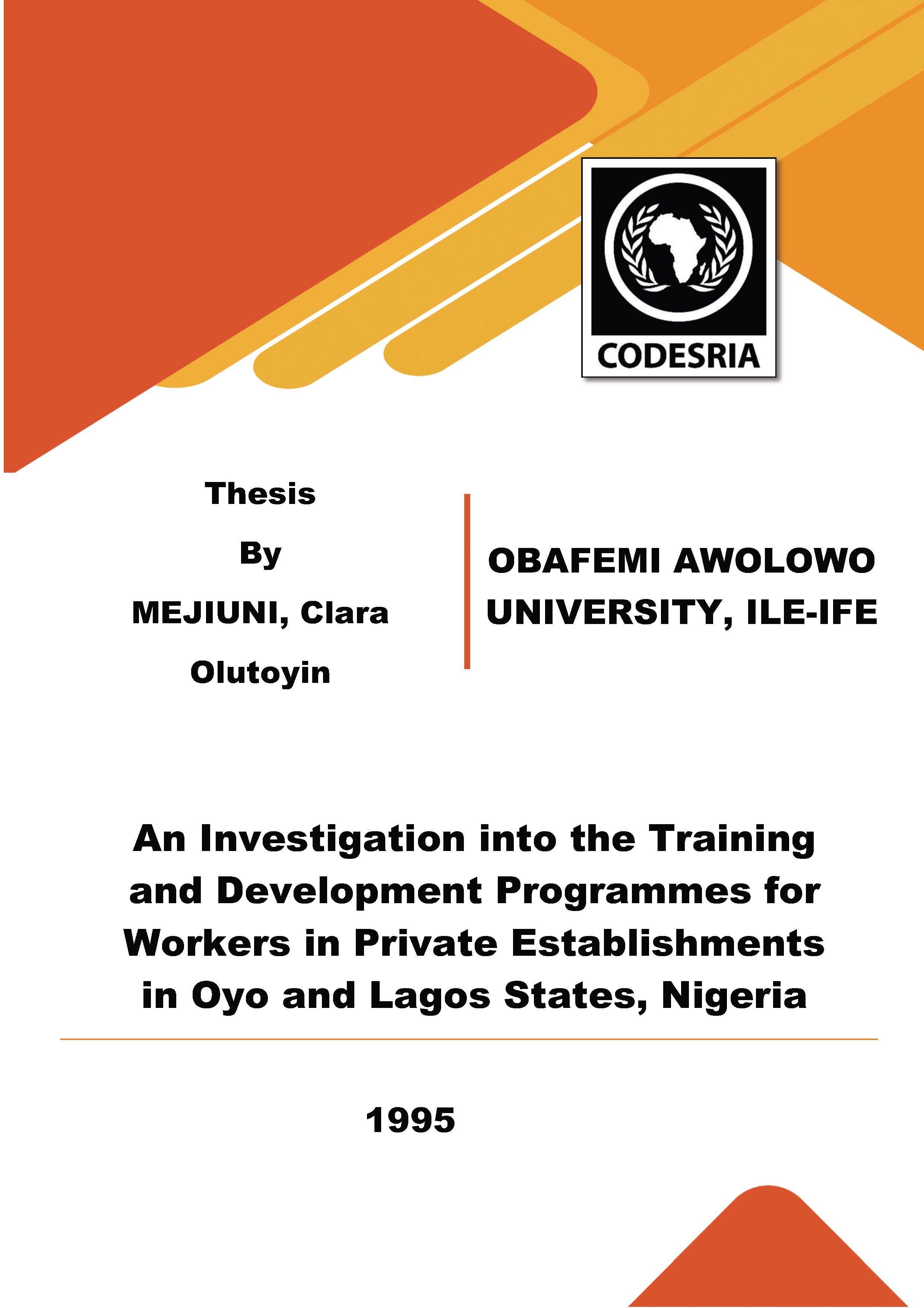An Investigation into the Training and Development Programmes for Workers in Private Establishments in Oyo and Lagos States, Nigeria
Keywords:
Investigation, Training, Development Programmes, Private, Lagos, NigeriaSynopsis
The study critically examined the extent of the involvement in, and commitment of private establishments to the provision of training and development for their workers. The relationships between the measures of commitment of companies to training, the workforce and turnover of the companies were also examined. Attempts were made to find probable explanations for the observed levels of commitment of companies to training, and the relationship between measures of commitment of companies to training and other relevant indicators.
The sample for the study consisted of fourteen companies that were systematically selected from eight manufacturingservice
and service industries in and around Lagos. Three research instruments were utilized to collect data from the companies selected for the study. The data collected were analysed using statistical models such as Fisher's Exact Test, Regression Analyses, and Pearson's Product Moment Correlation Coefficient. Data were also analysed by describing the phenomenon observed. All the. hypotheses were tested at 0.05 level of significance.
The results of the study indicated that a higher percentage of service companies (80%) expended money that was classified as high on training. When the amount expended on training was adjusted for the total workforce of the companies, the result showed that the expenditure on training per worker was dependent on whether the company was a manufacturing-service or service company. With an exact probability of larger value of . 021, service companies came clear as being more cornrni tted to training than their manufacturing-service counterparts. Sixty six percent of large companies had high commitment rating as against 56% for giant companies.
The results also revealed that the companies drew trainers from all the available sources for sourcing trainers
- in - house" and "out - of - house" and the companies had their own, or had access to the basic minimum physical facilities for training.
The results showed that although the percentage of workers trained was not dependent on the nature and size of the companies, a higher percentage of service (60%) and large companies (66%) had high involvement in training.
Finally, the factor that featured most prominently as the plausible explanation of the observed levels of involvement in and commitment of companies to training, and the relationship between the measures of commitment to training and other relevant indicators, was the 'human capital' theory, which is a strand of the Nee-classical economic theory.
Downloads
References
Abott, W. (1977), "The Future of Education and Work" in Labour Education, Vol. 2, No. 34.
Anaeme, E.A. (1982), "The Rcle of Employers in Workers'Education'' in Workers' Education in a Dynamic Society, Proceeding of the National Conference on Industrial Relations, Department of Adult Education, Ibadan; University of Ibadan.
Beach, D.S. (1975), Personnel: The Management of People at Work, New York: Macmillan Publishing Co. Inc.
Boone, E.J. Shearon, R.,-1. and White, E.E. (Eds) (1980), Serving Personal and Cornmuni ty Needs through Adult Education, London: ,Jossey-Bnss Publishers.
Dixen, W.J. and Massay, F.J. (1959), Introduction to Statistical Analysis, Tokyc: McGraw-Hill, Kogakusha Ltd.
Emiola, A. (1982), Nigerian L~bour Law, Ibadan: University Press Limited.






